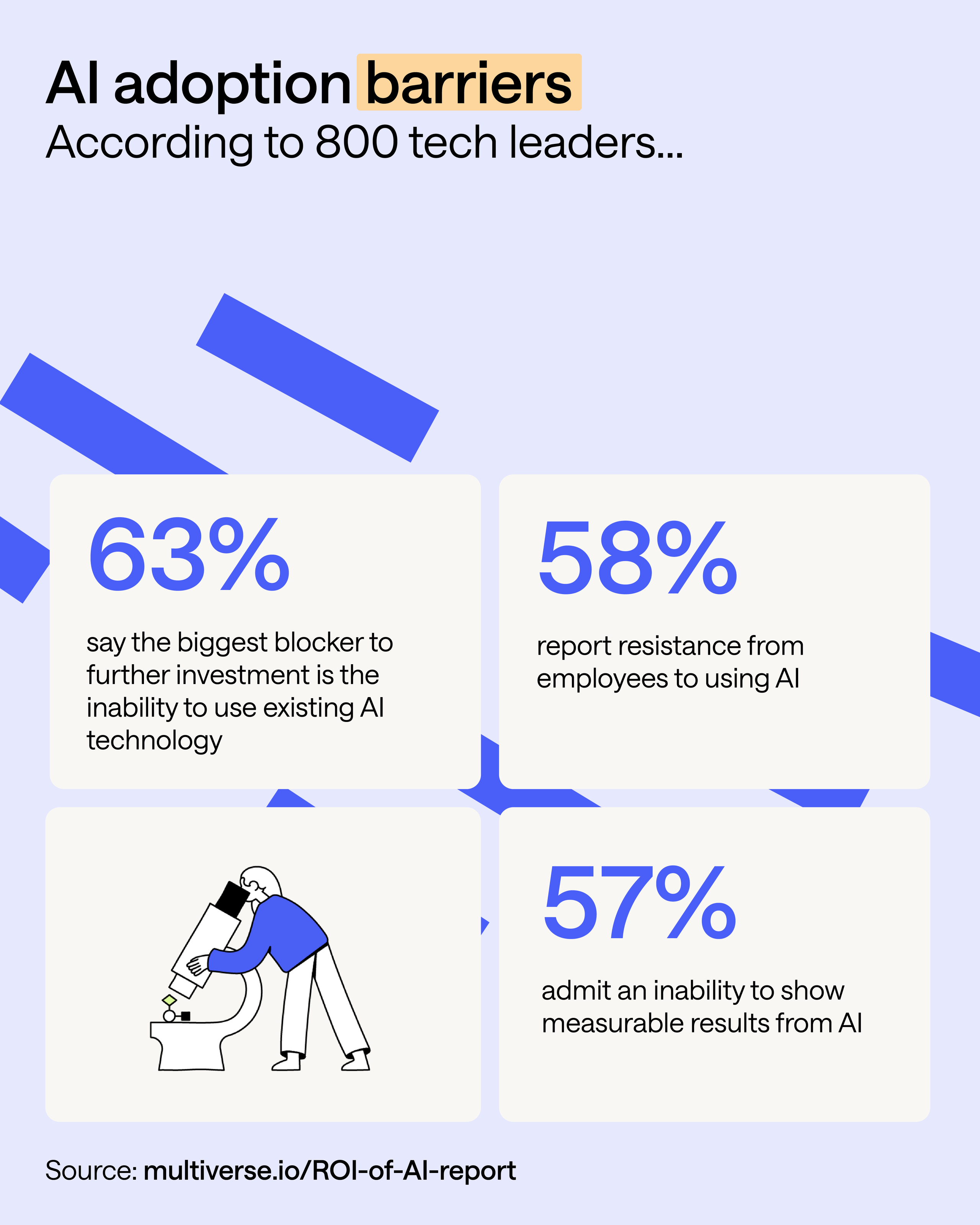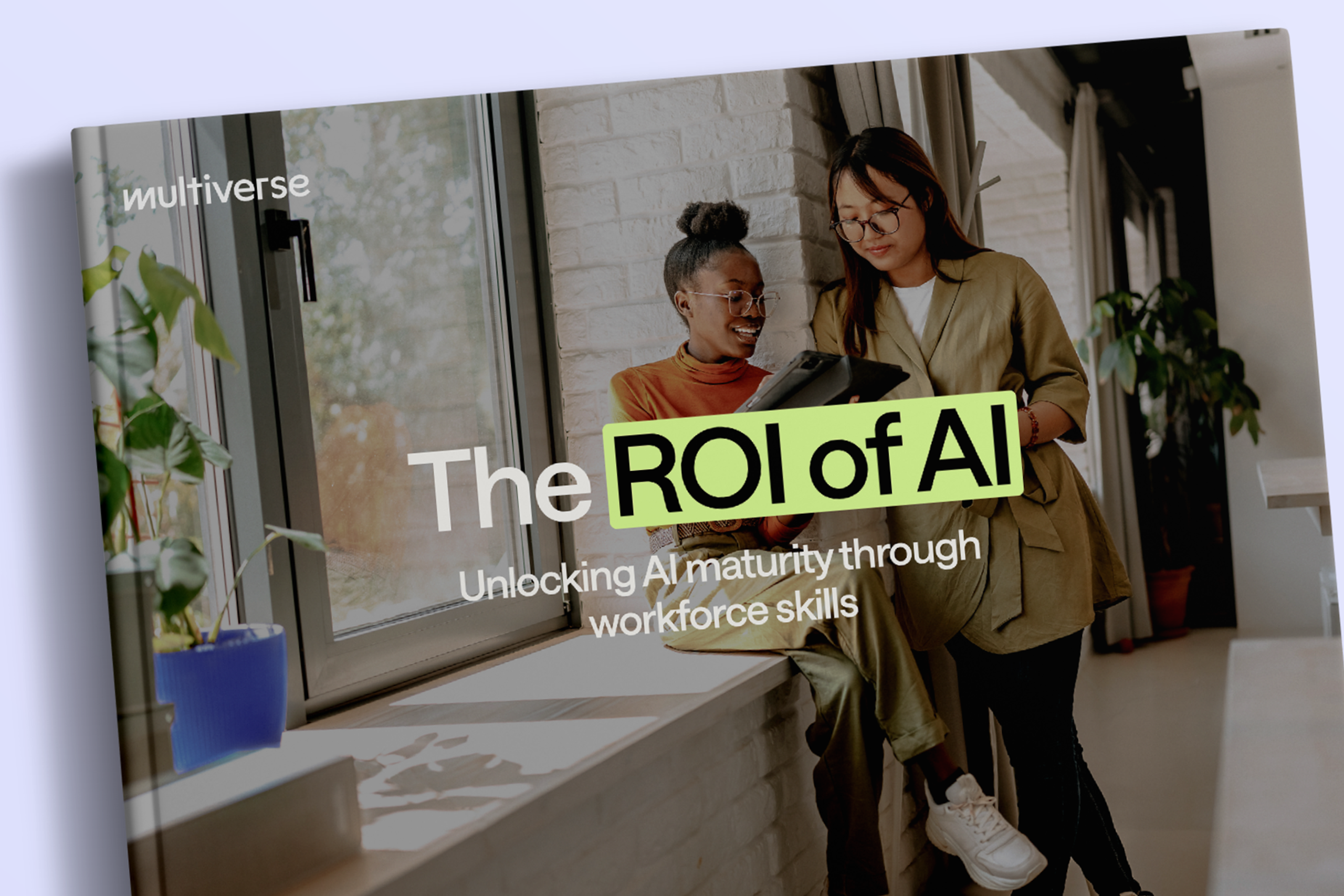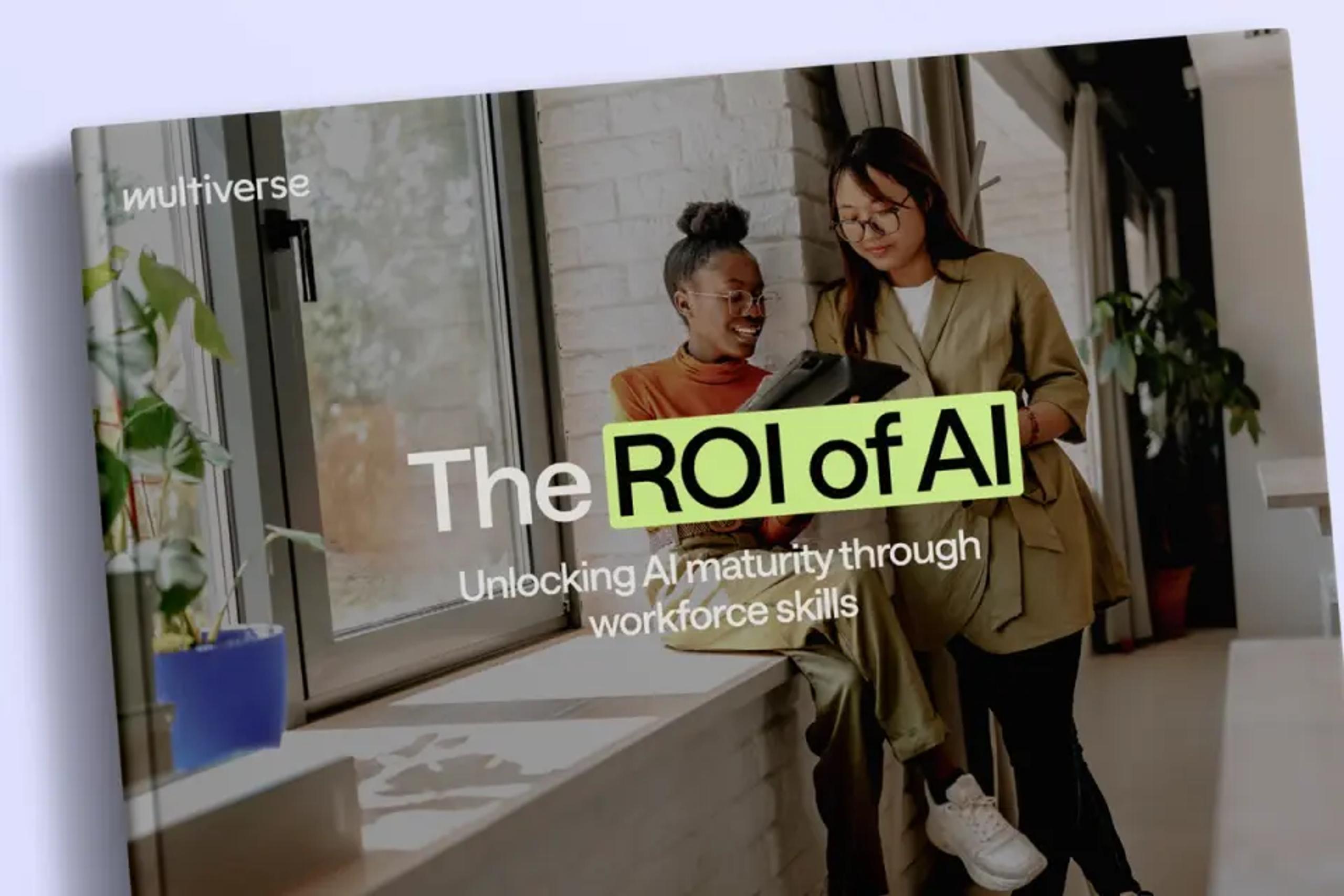AI is forecast to contribute $15.7 trillion to the global economy(opens new window) by 2030, according to PwC.
It’s beyond doubt there’s huge potential for AI to deliver results and economic value for businesses, from greater productivity to improved customer experience.
But to build a truly AI-native business – where AI is baked into the DNA of your business, and delivering maximum ROI – multiple elements must work in harmony, or momentum can easily stall.
We recently spoke to 2,000 tech leaders and employees – to get a realistic understanding of AI maturity today and what businesses can do to improve. And it’s clear that barriers to AI adoption are preventing the technology from delivering on its promise.
But what are they? Here’s three common roadblocks and how your business can start to overcome them:
1. Overestimating AI maturity
We found that four in five leaders say implementing AI has led to an increase in revenue generation, while 97% say the benefits have met or exceeded their expectations. Overall, 57% believe they are ahead of the competition in AI maturity.
Today, optimism in AI for businesses is understandably high. However, there are signs this may be an overestimation of progress. And optimism could be masking the realities of what it takes to fully implement and benefit from the technology.
As AI continues to evolve, establishing best practice is an ongoing challenge that’s creating risks and potential missed opportunities for the future.
Strength in areas such as data governance and security are vital hallmarks of AI excellence – and necessary requirements to reach AI maturity. But they are being overlooked by many.
Only a small proportion of leaders report they have established key hallmarks of best practice —for example, just 28% strongly agree they have provided guardrails and governance structures to limit AI risk. And less than half (43%) strongly agree they have ensured responsible use of AI in business practices.
This gap between leaders’ expectations and reality suggests that businesses are struggling to objectively assess their own progress with AI – and identify the further steps needed for full implementation.
Using a more objective framework to benchmark progress, categorise the stages of AI maturity, and create a roadmap for next steps can help businesses to plan more holistically – and realistically. We’ve included 3 actions for leaders in our ROI of AI report to get you started.
2. Difficulty securing investment and demonstrating ROI
Our research found tech leaders are positive about AI delivering financial gains in the long term – in fact, 85% expect to see an increase in revenue generation in 3-5 years.
But if businesses are unable to prove the value of AI today, and if employees lack the skills to access its full potential, then it will become increasingly difficult to unlock further investment – and AI progress will stagnate.
Of all the AI adoption barriers cited by leaders, 63% say the biggest blocker to further investment is the inability to fully use existing AI technology. Paired with more than half (58%) reporting resistance from employees to use AI and a lack of ability to demonstrate or predict tangible results (57%), it’s clear we’re at a standstill.
Value driven by AI needs to be tracked diligently and communicated within businesses. Only then can roadblocks, like resistance from employees or workforce skills, be tackled head-on. Take a look at our recommendations for employers in our ROI of AI report to find out more.

3. Employees still lack access to formal AI training
True AI maturity depends on people as much as technology, and our data shows a lack of workforce skills is slowing AI adoption progress.
Businesses need to build workforce expertise, fast, to combat struggles with implementation and get the most from AI. But training opportunities remain in short supply.
We found that most employees (51%) have received fewer than 5 hours of training on AI, with 25% opting to self-fund training. And many have gained skills by playing with ChatGPT (61%) or learning on the job (59%).
Of the employees we spoke to, 56% of workers that describe their AI skills as ‘expert’ have not received any formal training from their employer.
This gap in formal training may mean workers struggle to assess whether their actions are aligned to company policies or broader best practice – in turn, creating potential risks for the business.
Currently, workers are largely fending for themselves which has a number of ramifications for employees and businesses alike. For the worker it can be difficult to understand their personal skills gaps and learn efficiently with limited timeframes. For the business, informal AI usage from employees increases risk of misuse, and limits ability to measure ROI from new tools.
Learn more about your AI maturity
Assessing AI maturity helps businesses get the most out of emerging tech. From prioritising investment to identifying skills gaps, understanding where your business is on the AI maturity scale is the key to access future growth.
To learn more about AI maturity and next steps, check out our full ROI of AI report.








